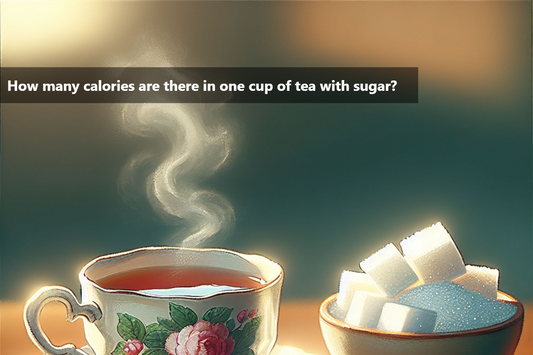Xylitol, a sugar alcohol used as a sweetener, is low in calories, derived from sources like birch bark. It offers dental benefits and is found in products like gum, candy, and baked goods due to its low glycemic index. Xylitol, sourced from plants, is known for promoting dental health and is popular among those monitoring blood sugar levels. Considered versatile and beneficial, xylitol is a natural substitute for sugar in various food items, appealing to health-conscious consumers.
Natural Sources of Xylitol
Birch Wood: Xylitol is primarily derived from birch wood, where xylan, a complex sugar found in the plant, is extracted and processed to produce xylitol.
Other Hardwood Trees: Hardwood trees like beech, oak, and eucalyptus also contain xylan, which can be utilized in the production of xylitol.
Fruits and Vegetables: Certain fruits such as raspberries, strawberries, and plums, along with vegetables like cauliflower and corn, naturally contain xylitol in small quantities.
Manufacturing Process of Xylitol
Sourcing of raw materials: Xylitol is commonly derived from sources such as birch wood, corn cobs, and certain fruits and vegetables like berries and mushrooms.
Extraction of xylan: The raw material is treated to separate xylan, which is the precursor to xylitol.
Hydrolysis of xylan: The extracted xylan is hydrolyzed into xylose through various methods.
Hydrogenation process: Xylose is further processed through hydrogenation to convert it into xylitol.
Purification steps: Additional purification processes are carried out to ensure the quality and purity of the final xylitol product.
Quality control: Careful monitoring of the manufacturing process is essential to maintain the integrity and effectiveness of xylitol as a sugar substitute.
Benefits of Xylitol
Promotes Dental Health: Xylitol does not contribute to tooth decay and can help prevent cavities by inhibiting harmful bacteria growth in the mouth.
Blood Sugar Management: With a lower glycemic index than sugar, xylitol is a suitable option for managing blood sugar levels, making it ideal for individuals with diabetes or those on a low-carb diet.
Refreshing Sensation: Known for its cooling effect, xylitol provides a refreshing sensation in products like chewing gum and mints, offering a sweet taste without the adverse effects of sugar.
Natural Source: Derived from fruits and vegetables, xylitol is a natural sweetening option compared to artificial sweeteners, making it a versatile ingredient in a wide range of foods.
Side Effects and Dosage of Xylitol
Side Effects:
Xylitol may cause digestive issues such as bloating, gas, and diarrhea when consumed in high amounts.
Some individuals may be sensitive to xylitol and experience allergic reactions.
Ingesting large quantities of xylitol can potentially lead to more serious conditions such as hypoglycemia in dogs.
Dosage:
For adults, the recommended daily intake of xylitol is between 10-70 grams.
It is advised to start with a lower dose of xylitol, such as 10-15 grams per day, and gradually increase as tolerated.
Higher doses should be divided throughout the day to minimize the risk of gastrointestinal discomfort.
Always consult with a healthcare professional or a veterinarian before starting or changing your xylitol intake.
To conclude:
In conclusion, xylitol, a natural sweetener derived from various sources, plays a significant role in the food industry. It is commonly extracted from sources like birch bark and corn cobs, providing a healthier alternative to sugar. Xylitol exhibits beneficial properties, making it a popular choice for numerous food products.
The adoption of xylitol in food manufacturing has gained momentum due to its low-calorie content and dental benefits. Its natural sources offer a sustainable option for sweetening products without compromising on taste. Foods with xylitol have become increasingly prevalent in the market, catering to health-conscious consumers seeking sugar substitutes.
Moreover, the manufacturing process of xylitol ensures purity and quality, meeting the standards set by the food industry. Understanding what xylitol is made from sheds light on its natural origins, appealing to those inclined towards organic and plant-based options.
In essence, xylitol continues to be a versatile ingredient, promoting dental health, weight management, and overall well-being. Its presence in various food items underscores its importance and the positive impact it has on enhancing the nutritional profile of products.
FAQs:
-
What is the source of xylitol?
Xylitol is mainly derived from birch trees, but can also be produced from other hardwood trees, corncobs, or sugar cane bagasse.
-
Is xylitol a natural sweetener?
Yes, xylitol is a natural sugar alcohol that is found in many fruits and vegetables.
-
How is xylitol extracted from its source?
Xylitol is extracted through a hydrogenation process of xylose, which is a sugar extracted from the plant material.
-
Does xylitol contain any artificial ingredients?
No, xylitol is a naturally occurring sugar alcohol and does not contain any artificial ingredients.
-
Is xylitol safe for consumption?
Xylitol is considered safe for consumption for most people and is commonly used as a sugar substitute in various products.
This Blog post is an initiative by DiabeSmart, to provide accurate and Nutritionist / Doctor approved information related to Diabetes. DiabeSmart is India's first Food brand designed specifically for Diabetics, that has been clinically tested on Diabetics and Pre-Diabetics to deliver 55% - 70% lower Sugar spikes. DiabeSmart is part of Lo! Foods - India's leading brand for Everyday Functional Health foods.











